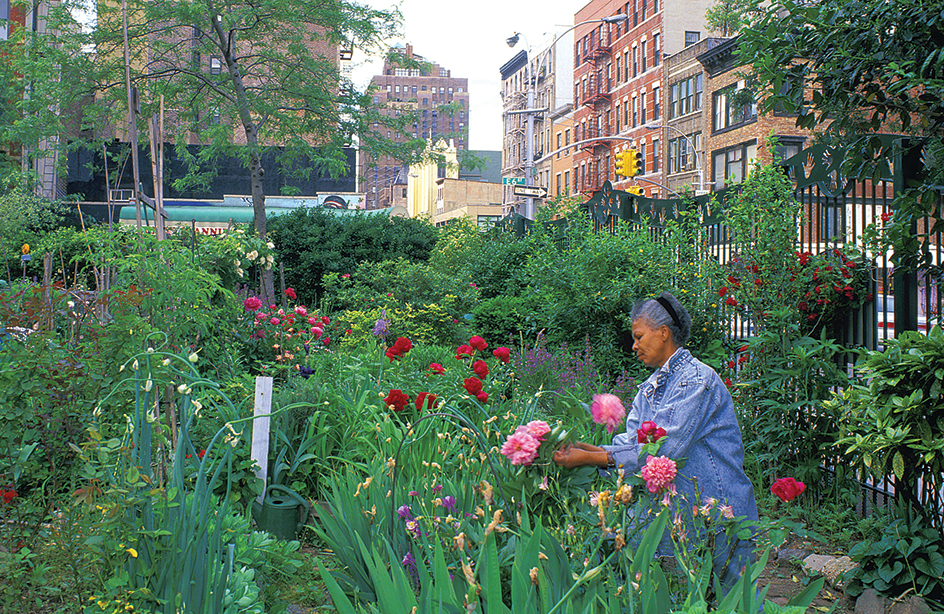Urban renewal is the process of removing run-down sections of a city and replacing them with new or renovated buildings. The new construction may include homes, stores, offices, manufacturing plants, government buildings, and transportation facilities. Sometimes city planners also create new parkland and other facilities for recreation.

The role of private investors.
Private investors fund most urban renewal, which is also called urban redevelopment. When buildings age and deteriorate, they bring less of a return on the owners’ investment. If the owners demolish and replace run-down buildings, the replacements should produce enough income to cover the costs of construction loans, operating and maintaining the buildings, and taxes. The new buildings should also provide what the investors consider a reasonable profit. But racial discrimination, high crime rates, and excessive land prices can make investors wary of committing to such projects, so urban renewal often requires government help.
The role of government.
City and state governments plan many urban renewal projects and provide incentives for private investors. For example, governments may encourage urban renewal by supplying part of the funding; by deferring taxes; by building streets, utilities, and parking; by easing the process of acquiring permits; and by providing special services, such as extra police and fire protection. Governments also can acquire land for urban renewal through a legal process called condemnation or by using the power of eminent domain to take private property for public use. This combination of government support and private investment is often called the public-private partnership.
History.
What may have been the first major urban renewal took place in Rome around A.D. 1. The Roman emperor Augustus thought that overcrowding due to immigration was destroying the city. He ordered the worst areas cleared for urban renewal. Workers demolished slums and replaced them with better housing.
For hundreds of years, urban renewal was done chiefly to repair districts damaged by disasters or wars. After the Great Fire of London in 1666, for example, the English architect Sir Christopher Wren rebuilt more than 50 churches and other buildings destroyed by fire.
During the late 1800’s and early 1900’s, many reformers became alarmed at the dreadful living conditions in large cities, such as New York City. The urban poor, including large numbers of recent immigrants, lived in crowded slums. Much of their housing consisted of cheap apartment buildings called tenements. Many social critics studied life in the slums and reported on the wretched living conditions there. One of the most influential reports was the book How the Other Half Lives (1890) by Jacob Riis. The work of Riis and others led to the first organized slum clearance efforts in North America.
The United States government became involved in clearing slums in the 1930’s. Federal officials decided to demolish tenements in poor condition and replace them with public housing to provide apartments for low-income people. The federal government paid the difference between the cost of maintaining the housing and the rents that low-income families could afford. In 1949, the Urban Renewal Administration was established within the Housing and Home Finance Agency to direct slum clearance projects in hundreds of communities.
Federal support for urban renewal programs grew from the 1950’s to the 1970’s. In 1965, Congress established the Department of Housing and Urban Development. The new department absorbed the Housing and Home Finance Agency and three other independent agencies involved with housing and community development.
Many large cities established urban renewal agencies, which used federal funds to buy land and demolish the old buildings on it. The cities then resold the land to local public housing authorities, who built public housing on the cleared land, or to private developers. If private developers wanted to buy the land, they usually had to submit competitive proposals. The city would choose a proposal that seemed economically sound and that met other goals. For example, the city might require that a plan include recreational and cultural land uses in addition to housing and commercial and retail space.
From 1978 to 1992, a program called Urban Development Action Grants (UDAG’s) gave federal funds to private developers for urban renewal projects. At first, UDAG’s had almost no restrictions. In the mid-1980’s, however, Congress sharply reduced the federal government’s role in urban renewal by cutting federal aid for such programs. As a result, much of the burden of financing urban renewal shifted to city and state governments and to the private sector. Today, the federal government funds urban renewal chiefly through a program called Community Development Block Grants. Block grants are fixed amounts of money given to state and local governments. State and local officials then decide where to use these funds. Another federal program called urban homesteading offers vacant lots and abandoned houses, at low cost, to people who will build on the lots or repair the houses for their own use.
In 1995, the Environmental Protection Agency’s Brownfields Program was set up to empower states, communities, and private redevelopers to work together to reuse properties called brownfields. Brownfields are parts of a city that were previously developed but are now abandoned or cleared, sometimes as a result of earlier urban renewal programs. Cities have turned brownfields into parks, recreational facilities, environmental preserves, and urban agriculture.
In the first decade of the 2000’s, efforts to control the federal deficit and changing political priorities led to a reduction in the federal government’s role in urban renewal programs. Instead, state and local governments resumed leadership roles in these programs.
